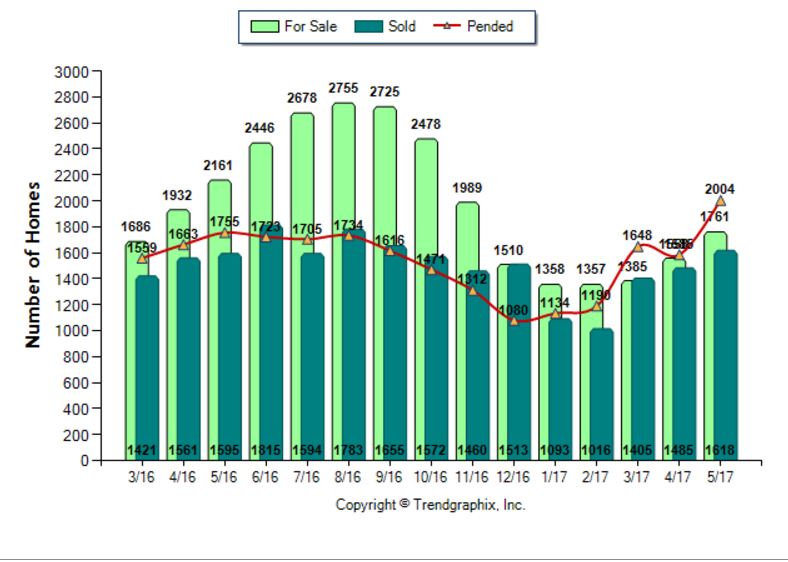A Shift in the Real Estate Market

THE SIGNS OF MARKET SHIFTS

THE SIGNS OF MARKET SHIFTS… A Shift in the Real Estate Market In Sacramento
I am seeing some big changes in the market in specific areas in the Sacramento Metro… In fact, the different price ranges are all reacting very differently to today’s social and economic pressures. Depending on your neighborhood, your price range and your personal situation- it may be time to take a snapshot of the market and the trends…
How would you know if your neighbor hod is beginning a real estate market “shift”? It’s the data: Absorption Rates, Days on Market, Months of Inventory… By watching the measurements that define a “SHIFT”; those metrics I just mentioned. Only thing is, unless you are “in the market” daily, you don’t even know it’s happening till it’s too late!
The most difficult thing about a Real Estate Market Shift, is that you cant be sure it happening until it’s over. We NEVER know for sure whether we are in a slight market adjustment or a major market retraction, a coincidental series of market events or a MAJOR SHIFT. Even for those of us working in the market daily, it’s easy to dismiss any deviation in the “norm” as a fluke, a one-off, a just a weird deal. As real estate professionals who study homes and prices all day every day day in and day out, we are our clients first alarm system. Because by the time you read it in the Sacramento Bee or see the graph on Zillow, there have been weeks of either opportunity or heartache… depending on which side of the table you are sitting.
The saying goes that market change always happens slowly… and quietly… and then SUDDENLY! Or at least it seems suddenly, because in one day, when the typical market data is released, all of a sudden, there’s an undeniable amount of evidence that things are different. Once it’s clear that there is different behavior in the market, the shift is either running with momentum or could already be over… the evidence comes after the fact, AFTER you can do anything abut it.
Real Estate Data can only be seen in the rear view mirror. Or out the back window… Data happens AFTER the transactional instances that create that data. Sacramento Real Estate Data isn’t unique this way, whether local, state wide, region or nationally, most of the real estate related market reports, or reporting done by groups, publications, industry organization etc. that track market data usually do so on a monthly basis.
Absorption Rate, Days on the Market, Months of inventory; they are all measurements of events. These actions happen one at a time… One home, one family, one triumph or one calamity at a time.
HERE’S WHAT THE “TREMORS” WILL LOOK LIKE:
Just a few more homes on the market. More homes “expiring” or going all the way through the listing period (typically either 120, 180 or 365 Days) UNSOLD. Longer Average Days on the market. and a higher trending Months of Inventory. Absorption rates that show weakening demand. An increase in price reductions. An increase of homes “back on the market” which means more failed escrows.
And to define those terms above; here’s a quick guide to the measurements that define a “SHIFT”:
ABSORPTION RATE A measurement frequently used to gauge the liquidity of a given market is the absorption rate. This is basically the rate in which a specific segment of a real estate market sells in a given time frame. As a generic term, Absorption Rate is sometimes used interchangeably with sales rate or turnover rate.
DAYS ON MARKET (DOM) are the number of days between a listing going on market and accepting an offer. The lower the average days on market figure, typically the stronger the buyer demand and the hotter the market. Note that this statistic is easily distorted by distressed home sales, which often have a very high DOM; by that minority percentage of listings that sell after multiple price reductions (one property that sells after being on the market for 12 months can sometimes play havoc with an overall average for a neighborhood); and by deals that fall through after offer acceptance (the listings come back on market and perhaps sell quickly, but the DOM clock keeping ticking throughout). Currently, appealing, well-priced new listings often accept offers within 7 to 14 days of coming on market no matter what the market is doing.
The biggest flaw is that DOM is only affected by the homes that actually CLOSE! So, the homes that sit for months and then go off the market unsold do not even show up in this metric. This is why DOM and MSI do not trend exactly. There is often a confusing disparity between DAYS ON MARKET VS. MONTHS OF INVENTORY.
MONTHS SUPPLY OF INVENTORY (MSI) reflects the number of months it would take to sell the existing inventory of homes for sale at current market sales rate or “TURNOVER” rate. Using the previous months number of sales, how many months would it take to sell all the homes available. The lower the MSI, the stronger the demand as compared to the supply and the hotter the market. Typically, below 3-4 months of inventory is considered a “Seller’s market”, 4-6 months a relatively balanced market, and above 6 months, a “Buyer’s market.”
There are often huge differences between neighborhoods, price ranges, school districts… Huge disparities that your would never imagine.
What’s the only way for you to be safe, and know immediately when these red flags rise?
I’ll tell you- I can get the information to you
If you are thinking of buying or selling in the next 0 to 12-18-24 months, (actually any time in the next few years, it is never “too early”) YOU NEED TO SEE THESE STATS. I always know the most important statistics. I track them regularly and would love to visit with you, answer any questions and set you up on a system that will give you access to the information in real time. As it happens.
See what the trends say about you house. Go to www.smartersellers.com to find out the averages. If you’d like, it only takes me a few minutes to do an in-depth valuation!
Talk to you soon!
Related posts
March 5, 2022



